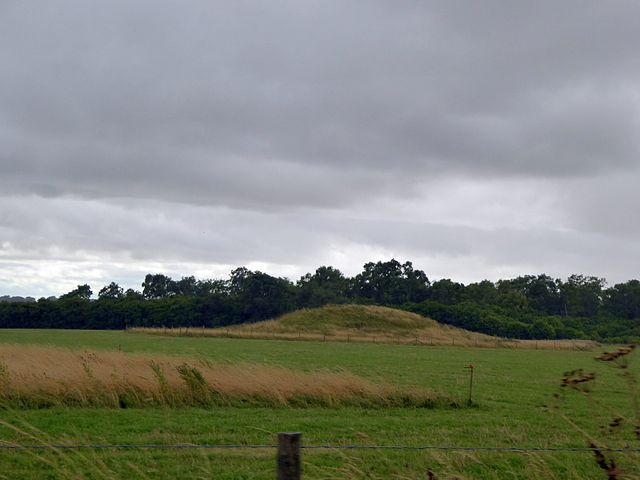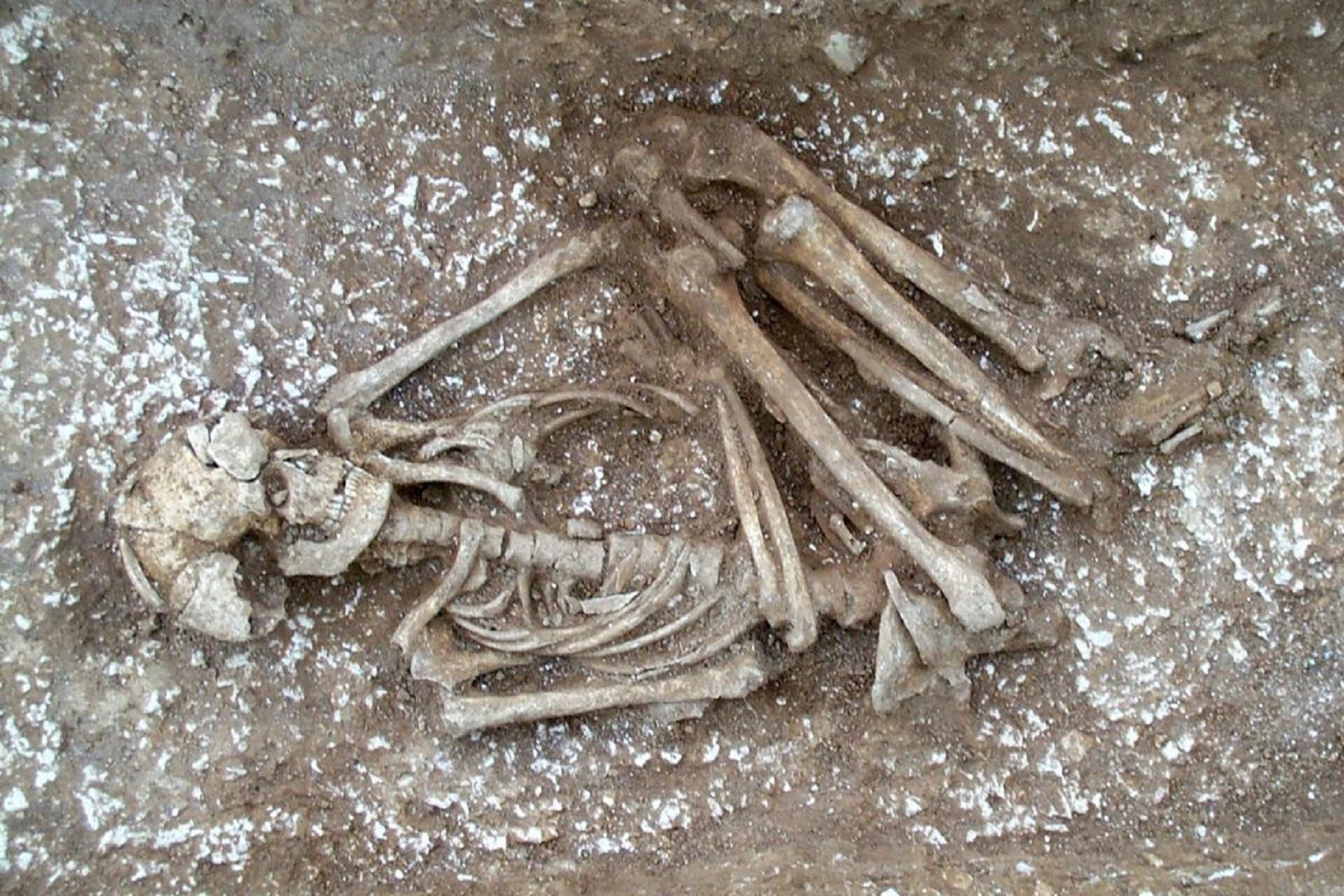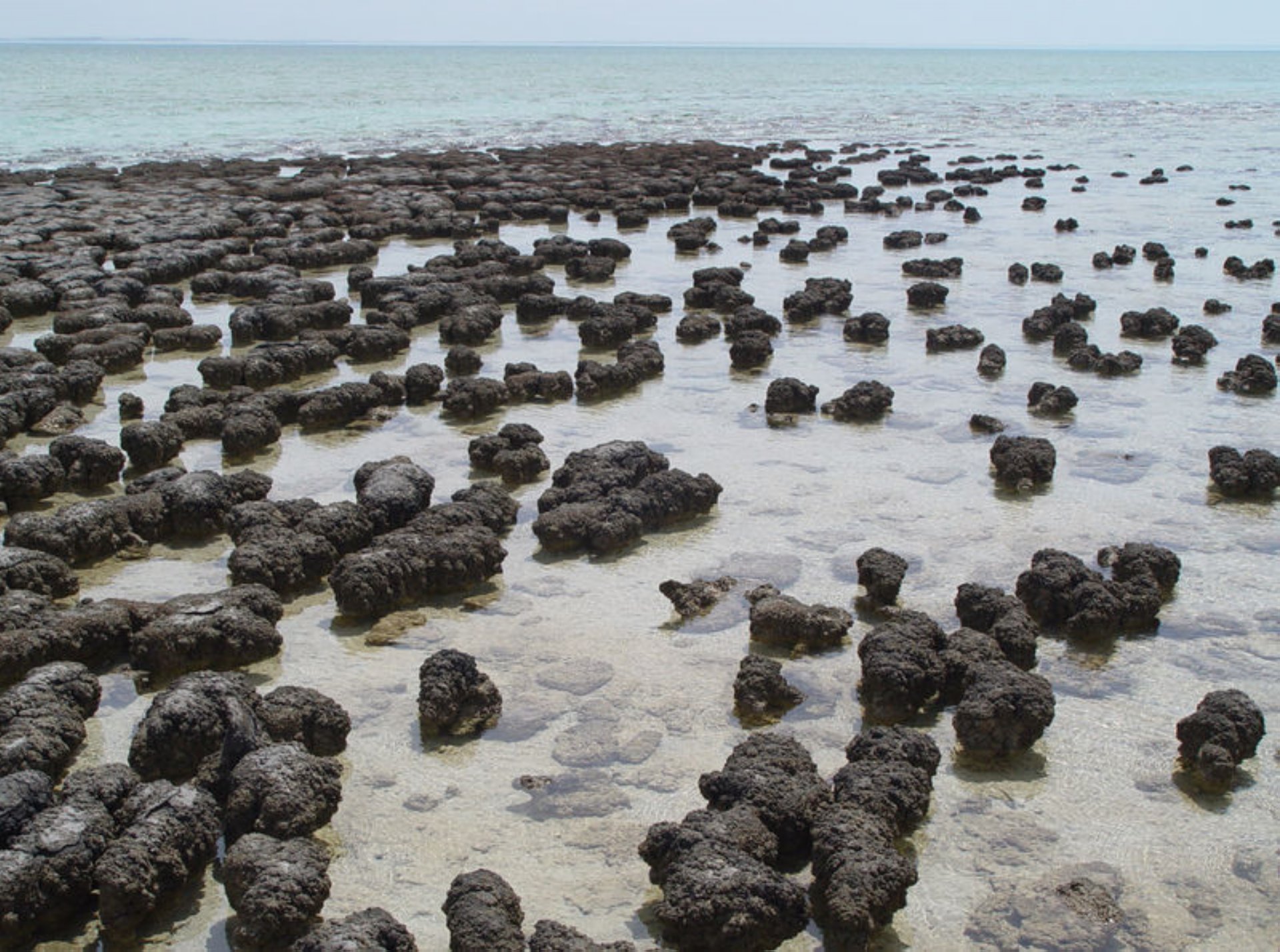Stonehenge Part 8/8 - Graves.
That Stoneheng has served as a cemetery for many centuries is certain. The numerous burial mounds prove it. They are all empty, there has been too much time for looters and curious people. That a burial mound erodes a road and so merges into the landscape or village is an ordinary thing. If that happens before his looting, then archaeologists can make some special discoveries. We will go into three special finds. The museum of Salisbury is dedicated to this Stonehenge.
We focus for a moment on a Barrow where a woman of stature was buried.
The grave was dated c. 1900 B.C. and the find was made at the end of the 19th century. The grave is situated 1.5 km south of Stonehenge in Normanton Down (Wiltshire) on the other side of the footpath that passes by Coneyhenge. At the top of a low ridge (overlooking Stonehenge) are 1 long Barrow and about 40 round Barrows from the Bronze Age.

The Normanton Down. Photo from Wikipedia.
In addition to burnt bones, grave goods were also found. The ornaments of the clothing point to a woman. The unusually rich grave goods suggest that some women were equal to men.
This is the oldest tomb of a woman with such exceptional grave goods. The centuries before, wealth was concentrated in male graves. It seems to indicate that at least some women belonged to the top stratum of society.
One of the most remarkable objects:
- Earrings in amber.
- Pendants in gold in which a remarkable tiny piece of human skull is embedded.
- Also a pottery incense burner.
All objects were probably made in the region of Stonehenge. In order to make some jewellery, some kind of lathe was used, so artistic craftsmanship. But the raw materials and the style come from far away:
- Barnstone comes from the Baltic regions.
- The style of the incense burner is known from northern French coastal areas. The style has been copied many times and many people spontaneously recognize Stonehenge in it.
It says that the vast majority of the Barrows were used to bury men. They were of high social status and were buried with their daggers, on their left side in the grave. They were probably leaders of the community.
We focus for a moment on a round burial mound where two people were buried.
The grave was dated c. 2300-2000 B.C. and it is located in Amesbury. It is known under the name “Together to the afterlife”. It was discovered at the end of the 19th century.
Beneath the large round burial mound in the face of Stonehenge were two people buried, a man and a woman:
- The man was lying on his left side, squatting, as if he were asleep. Or did people believe in rebirth and therefore put him in a fetal position?
- The woman’s grave contained beads in faience and amber.
The centre of gravity lay with the man, at his feet were grave goods:
- An earthen cup decorated with fingernail imprints and vertical marks.
- An oval hammer of polished hornstone. It was probably used in metalworking.
- A flint dagger with a wide blade and a sharp edge. The dagger is known as the ‘Stonehenge Dagger’. It is a masterpiece of flint working. Making such daggers requires as much skill and experience as making similar daggers in copper and bronze. The wooden handle has rotted away. Such daggers are also engraved in the Sarsens in Stonehenge.
We focus for a moment on a grave that was discovered during renovation works.
The tomb itself was dated about 2300 B.C. and is known as Amesbury Archer, an archer from the beginning of the Bronze Age. It was discovered on 3 May 2002 while digging the foundation of a housing block in Amesbury.
It was untouched and contained many grave goods, at least ten times what could normally be expected. And so the deceased was in the news as the King of Stonehenge (which is about 3 km away). We see his possessions, they are the oldest gold objects ever found in England.
Some 100 objects have been found, they must be seen in the light of his eternal life. He was given everything he needed to survive:
- The complete skeleton of a man.
- Three copper knives.
- Two golden hairpins.
- Two sandstone wrist protectors against the kickback of the arch, from which his first name was derived.
- A coat pin out of bone.
- Sixteen arrowheads.
- Five bell jars.
- Four tusks of wild boar.
- Some flints.
- A flat stone to work metals on, he may have introduced metalworking and gave it a foretaste of his surroundings.
In-depth research revealed that the man was 35 to 45 years old. He was heavily built. He had an abscess on his jaw that was almost certainly painful. He had also had an accident in which his left knee was crushed. So he walked with a stiff leg on which an infection was still present. Perhaps he was in constant pain. It is speculated that he might have come to Stonehenge to be cured. Some people want to compare Stonehenge with today’s Lourdes. Examination of his tooth enamel revealed that the man must have spent his childhood on the European mainland in the Alps, probably in present-day Switzerland. The ratio of the isotope content of oxygen in the enamel is determined. This ratio varies according to geographical location, where both latitude and altitude can be ascertained. It could not be deduced how long the man had already been in Great Britain, but there will be a solution for that later.
Maybe he belonged to the elite that was partly responsible for building up Stonehenge. It was precisely at that time that people were engaged in the transportation and establishment of the giant Sarsens. So for some he is a pilgrim and for others a kind of architect. In any case, he belonged to the group of people who brought metals from the mainland, perhaps that is why he was even regarded as a magician.
Surprisingly, a skeleton of a young man of around 20 years of age was found in his immediate neighbourhood. Research has shown that they were family, so possibly father and son. An analysis of the bones showed that they both had an unusual fusion of the heel bone with the foot bones, which may indicate a hereditary disorder. The son would never (at least not for a long time) have been on the mainland. With this we can say that his father had been in England for 20 years. And so we speculate on the fact that that father may have been a thinking force in the construction of Stonehenge. Why else did he stay here for so long? Surprisingly, two golden hairpins were also found in the young man’s mouth, as if to prevent them from being stolen. They look like the hairpins found with the father.






Comments